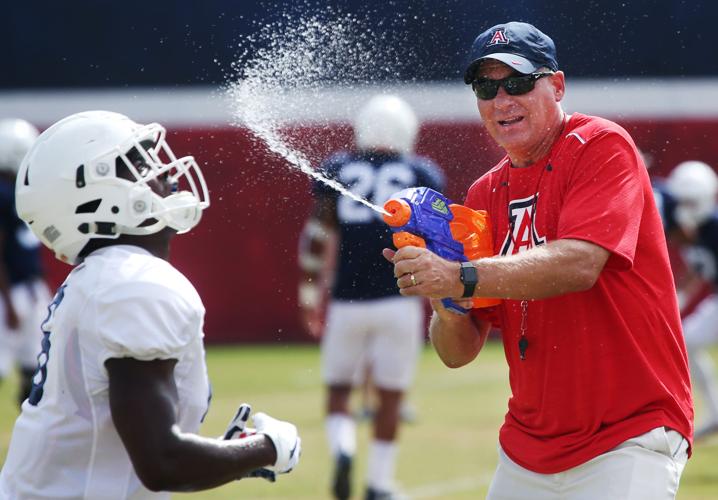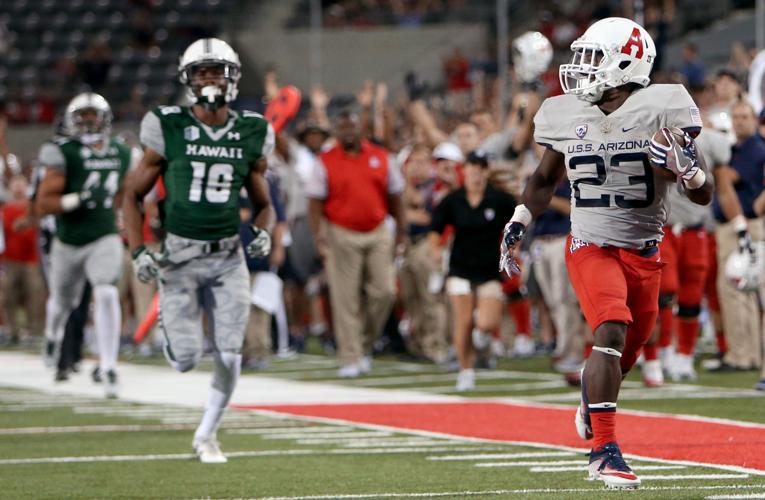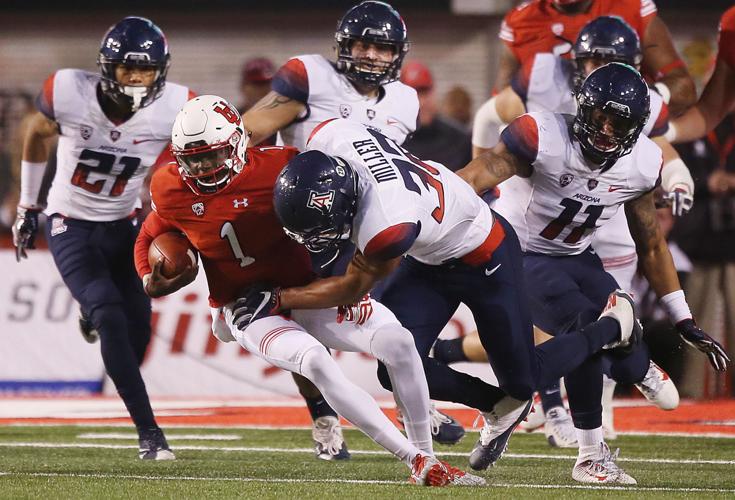Editor's note: This story is part of the Star's Aug. 27 college football preview section.
No one gives the Arizona Wildcats much of a chance this season, and no one understands why better than UA coach Rich Rodriguez.
He understands and accepts the reality of Arizona’s situation: The Wildcats went 3-9 last season, continuing their downward trajectory from the 10-4 peak of 2014. They are predicted by most to finish last again in the Pac-12 South. If that happens for a second straight season, Rodriguez could be out of a job.
“I have more confidence in us than everybody else does, and we have more confidence in ourselves,” Rodriguez said during training camp. “But didn’t one coach say you are what your record says you are?
“Until we win games, we are what people say we are. Hopefully we’ll have a chip on our shoulder and prove otherwise.”
Arizona did not have sufficient talent, depth or injury luck to compete with most conference opponents last season, leading to an eight-game Pac-12 losing streak — most of which were blowouts. The Wildcats are hopeful they have solved at least two of those three problems heading into this season.
An impressive crop of newcomers has boosted the quality and quantity of Arizona’s athletes. The Wildcats emerged from camp with genuine hope of substantial improvement.
The questions are how much and when it will come to fruition. We’ll find out soon enough.
In the meantime, here’s a closer look at the 2017 Arizona football team:
Offense
Arizona ranked first in the Pac-12 in rushing last season — and 10th in passing. Achieving better balance is a must.
There’s little doubt the Wildcats will be able to run the ball proficiently again. They boast a deep stable of running backs, led by senior Nick Wilson and redshirt freshman J.J. Taylor. Neither were able to stay healthy last season (durability issues have plagued Wilson since mid-2015), but if they can stay on the field, they can form a potent 1-2 punch. Senior Zach Green is a reliable backup option, and Nathan Tilford — Arizona’s top-ranked recruit — is expected to contribute as a freshman.
The Wildcats’ leading returning rusher is actually quarterback Brandon Dawkins, who gained 944 yards and scored 10 touchdowns last season. The redshirt junior is the heavy favorite to retain his starting role.
He worked throughout the offseason on improving as a passer after slumping down the stretch last year. That includes everything from quickening his release to remaining more patient in the pocket.
Dawkins also failed to make it through the season last year and has vowed to play smarter this time around.
Should Dawkins get hurt or play poorly, sophomore Khalil Tate likely would be the next man up. Expectations remain high for Tate, who struggled when forced into the lineup because of injuries last year. Former pro baseball player Donavan Tate (no relation) is another intriguing option, but he didn’t appear to be ready in August after a lengthy absence from football.
Savvy junior Shun Brown leads a receiving corps in the midst of a transition period. The Wildcats’ second-best option might be redshirt-junior tight end Trevor Wood, a massive target (6-6, 265) who had a strong training camp.
The offensive line, while not exceptionally deep, could be one of the strengths of the team. Seniors Layth Friekh (left tackle) and Jacob Alsadak (right guard) have tons of starting experience and will get looks from pro scouts. Center Nathan Eldridge might be the UA’s most improved player after being thrust into the lineup last year as a redshirt freshman. Left guard and right tackle were somewhat up in the air as of this writing, but Arizona has experienced options at both spots.
Defense
Rodriguez realized his defense was headed in the wrong direction after the 2015 season, and he has been devoting resources to the problem ever since.
“I’ve got more coaches on defense,” Rodriguez said. “I’ve got more players on defense. I hope that will lead to more competition and better play.”
Despite replacing the defensive staff and revamping the scheme, Arizona experienced neither last year; the Wildcats finished in the bottom third in the league in most categories. But improved depth and greater familiarity with Marcel Yates’ scheme have sparked sincere optimism within the program.
Barring injuries, Arizona is expected to rotate five to six players at the two interior defensive line positions. Junior college transfer Dereck Boles, who began his college career at Boise State, should have a sizable role.
The biggest question up front is whether the Wildcats can generate a consistent pass rush. The defense suffered a tough blow when senior edge rusher DeAndre’ Miller injured his foot in July. Miller is expected to be back sometime in September. Will other options emerge by then?
Nowhere is Arizona’s youth movement more prevalent than at linebacker. Four of the projected top five ’backers are freshmen or redshirt freshmen, with redshirt junior Brandon Rutt being the lone exception. First-year “Will” linebacker Tony Fields II has impressed since spring and might be a star in the making.
The secondary should be the strength of the defense. Junior Demetrius Flannigan-Fowles is the unit’s top playmaker, and he leads a deep (if young) group of safeties. Junior Jace Whittaker provides a steady veteran presence at cornerback, while senior Dane Cruikshank can play both cornerback and safety.
Special teams
Arizona struggled in multiple areas last season, and special teams were no exception. The unit has a new coordinator in Brian Knorr, who arrived in spring with a fresh approach.
Redshirt junior Josh Pollack is likely to retain his role as the field-goal kicker after an uneven first year on the job. Pollack punted for much of 2016 as well; with the Wildcats shifting those duties elsewhere — redshirt junior Jake Glatting showed promise late last season — expect Pollack to perform more consistently. Freshman Lucas Havrisik has a powerful leg and should take over the kickoff duties.
Despite having plenty of speedy skill-position players, Arizona’s return game provided little if any spark last season. Potential returners include Brown and Cam Denson, but they’ll need better blocking to make a real difference.
Special teams, offense (too many three-and-outs) and defense (too few takeaways) contributed to a league-worst field-position differential last year (minus-5.5 yards). Arizona must do all the little things well to reverse the course of the program.






